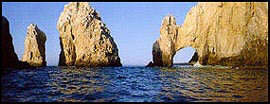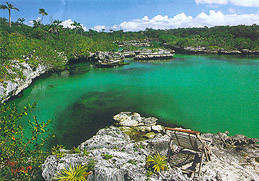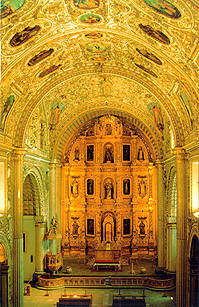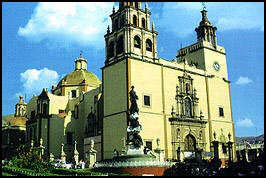 WHAT TO SEE... WHAT TO SEE... |
Mexico is a country rich with history, with culture and tradition and with nature and adventure. Some of the worlds most beautiful beaches outline this incredible country. Snow topped Volcanoes, luscious tropical forests and breathtaking landscapes are many of the wonders of Mexico. Full of contrasts and diverse cultures, Mexico offers exquisite Art, Music and Magic to all who visit. The regions of Mexico have identities of their own: Mexico sounds like paradise but when you come and see it for yourself, you realise that you are living a dream that has taken millions of yours to create. A land of people, culture, history and above all experiences that are second to none.
 ESTADO DE GUERRERO ESTADO DE GUERRERO |
 TAXCO TAXCO |
Taxco was officially founded by Spaniards in 1529. They had been exploiting the region, rich in various minerals, but particularly in silver, since 1524. Taxco is one of the oldest cities of the colonial period in America. Silver handicrafts in Taxco became the finest silver jewellery in the world, renowned for their quality and beauty. Taxco's altitude ranges from approximately 1,725 to 1,835 meters above sea level.
Visit the smallest mine in Mexico, see how mining was done many years before any modern techniques were applied: Plateria "La Mina", on the corner of La Florida and Garita Street!
 ACAPULCO ACAPULCO |
The worlds largest and by far most beautiful bay. Home to the rich and famous for many years, Acapulco continues to attract visitors from all over the world. One can relax in it's warm waters, be mesmerised by the unique sunsets at "Pie de la Cuesta" or simply promenade along the side streets where local artisans and handy crafts can be found. Whatever your tastes are, Acapulco has hotels to cater for everyone.
 IXTAPA IXTAPA |
For many years this hidden jewel of the state of Guerrero has been shadowed by the bigger sisters of Acapulco and Taxco. Now in continuous growth due to its attractions Ixtapa fulfils its promise. A beautiful marina, plenty of golf options and top hotels and restaurants attract both foreign and national visitors to this demure and peaceful destination. You can walk endlessly through its beaches, which are never too crowded and see the enchantment of the Mexican Pacific for yourself. Once a haunt for Pirates, now a retreat for tranquillity away from the hassle of the big cities.
 STATE OF BAJA CALIFORNIA SUR STATE OF BAJA CALIFORNIA SUR |
Over the years , this state has become an example of cross cultural living at its best. For many years neglected by vast tourism expansion, it is still a place of worship for the jet set in search of peace and some of the most spectacular scenic views anywhere in the world.
 LOS CABOS (Cabo San Lucas and San Jose Del Cabo) LOS CABOS (Cabo San Lucas and San Jose Del Cabo) |

Los Cabos is a mecca for those who love fishing. There are two important contests that take place every year: The Bisbe tournament and the Gold Cup. Famous for the Blue Malins, which some reach 1900 pounds, the hotels and resorts of Los Cabos regularly arrange competitions.
The most astonishing sites of Mexico begin in Los Cabos. Perched on the Peninsula of Baja California Sur, the gateway to Mexico from the west coast, there is a special energy and timeless quality to be discovered. Emotional scenery, and shorelines and bays that melt away in to the coast are what attracts such a discerning an cosmopolitan array of people. Home to the Gray whale, which migrate en masse during the early part of the year, visitors arrive in their thousands to watch this spectacular event unique to Baja California Sur.
Sports: Scuba diving, Deep- sea fishing, rare under water topical life, various world class golf destinations
Some of the worlds most sophisticated and modern resort hotels where you can go completely unnoticed in paradise can be found where the Pacific ocean meets the Sea of Cortes.
 STATE OF QUINTANA ROO STATE OF QUINTANA ROO |
 CANCUN CANCUN |
In the past few years the amount of flights going to Cancun has more than tripled. Due to the demand of the tourist Cancun has quickly become one of the most popular tourist destinations in the world.
 VISIT VISIT |

The Mundo Maya- some of Mexico's historic attractions where you can find archaeological treasures steeped in tradition and form part of the regions for most attractions.
Xcaret is the largest ecological park in the region. Natural vegetation and rare tropical birds live in this wonderful creation. Scuba diving and jeep tours are also high on the list of things to do. Playa del Carmen, home to the European visitor is a natural and unspoilt delight of peace and beautiful beaches trail the shores.
 STATE OF MEXICO STATE OF MEXICO |
 TOLUCA TOLUCA |
The capital of the state of Mexico, found 46 miles west of the Mexico City. The weather contrasts by being very cool by night and extremely hot by day. The cities lies in the middle of a valley less than 25 miles from the worlds only drive in Volcano called "Nevado de Toluca". 16th century "convent of Acolman" on the road toTeotihuacan, one of the finest examples of plateresque art in the Americas.
Another famous example of culture and history is the famous seminary, church and museum at Tepotzotlan. 26 miles North West of Mexico City.
The zoo of Zacango, the former hacienda located of the highway leading to Ixtapa de la Sal.
 MEXICO CITY MEXICO CITY |
Downtown
Famous for having the second largest square in the world, Known as the Zocalo or pedestal, is the ideal point to start a tour of this incredible city.

Among the downtown hotspots are: The Alameda park; a wide array of people gather daily to chit- chat and it is a haven for people watching. Found close to the Zocalo, it is an interesting place to take photos and by handy-crafts from the locals. For those who love silver there is the Madero, a street gilded with silversmiths. It is also home to many good restaurants and nightclubs. Other places that should not be missed are the Palacio National, Palacio de Bellas Artes and the Metropolitan Museum.
Zona Rosa
This area of city is full of life 24 hours a day. Full of shops and restaurants, this commercial tourist area offers all sorts of distractions. Located just of Avenida Reforma, home to many of the largest companies and multi-nationals the Zona Rosa hot spots are as follows:
Polanco
Centred by the chic Avenida Presidente Masaryk, the luxury shopping begins here! This area is one of the safest in the city and also one of the most residential zones. The tree lined avenues offer international cuisine and "the set" dine en route to their mansions in Las Lomas, where you will find colonial architecture crossing modern Mexican design hidden deep behind the fortress walls of this fashionable neighbourhood.
 A MUST SEE. A MUST SEE. |
La Ciudadela
South- east of the revolution, on the Baleras Street, is one of the city's better handicraft markets. Enclosed behind high walls, it's gates lead to open air aisles lines with shops of assorted handicrafts, including wool blankets, leather goods, guitars, and clothing and textiles from south Mexico and Guatemala. Zapotec women from Oaxaca , in elaborate regional dress, can be seen weaving textiles with back strap looms. There is good Mexican style fast food restaurant, known here as the "comida corrida", with outdoor tables facing the courtyard.
Parque de Chapultepec
A few blocks west, past some of the most luxurious hotels in the city, begins Chapultepec Park, 2,100 acres of greenery with wood, marble statues, playgrounds, jogging paths and restaurants. Man made lakes with small boats, botanical gardens, a fine zoo and a Children's petting Zoo. Few cities anywhere in the world boast such a spacious park and as many as half a million residents head for the grounds every Sunday.
El Bazar (del Sabado) en San Angel.
One of the quaintest areas of the city. Cobble streets
decorate some of the most beautiful examples of
colonial architecture. This distinguished residential
area opens it's doors on Saturdays to a plentiful
crowd of local and foreign artists. Here, you can
find paintings and sculptures of varying styles.
Merchants set up shop for the day displaying their
original work: Jewellery, Art & crafts and when
you have finished there are terraces to eat and
a host of restaurants to choose from. |
Coyoacan Market
Set in the South of the City, this bustling market comes alive at the week -end. Local vendors barter everything in sight in positive spirit! Among the stalls , you can find everything from clothing to replica tapestries of ancient pre Hispanic symbols.
 STATE OF OAXACA STATE OF OAXACA |
 OAXACA OAXACA |
It was founded in 1486 when the Aztec emperor Ahuizotl sent a military group to the conquest of the Mixtecs and the Zapotecs. They were established in a valley surrounded by trees called Huajes so they named the place HUAAXYACAC this means the Huaje nose. The city is located in a valley at 1640 feet above sea level and has an average temperature of 66 degrees. The four seasons in the year are very defined.
The Cathedral dates back to 1553, the temple is ordained with many ornaments.

Santa Domingo Temple: built in the 16th century by Dominican Friars who decorated it I the middle of the 17th century. The façade stands out as a moderate baroque and inside there is a gold carved leaf with a vaulted dome rich in paintings.
Basilica of our lady of the solitude: one of the most well known constructions of the city because of its artistic makings and its great devotion to the patron of the people of Oaxaca.
The image has a crown of more than 600 diamonds and 71 ounces of gold.
Temple of San Agustin: building started in the mid 16th century and took until 1722 to be completed. It is the widest temple in the city.
 PUERTO ESCONDIDO PUERTO ESCONDIDO |
Known as the Capital of surfing in Mexico, surfers gather continually through the year to enjoy the great waves that it offers. For those who do not surf, it is truly a wonderful place to enjoy for relaxation. The town centre has been closed of to traffic and is a promenade full of cosy restaurants. One of Puerto Escondido's attractions is Puerto Angelito, there you can rent a hammock and enjoy a day of hedonistic bliss. The area is accessible by taxi or by boat at reasonable cost. Day trips include a visit to the turtle sanctuary of Mazunte, Zipolite's nudist beach and the bays of Huatulco.
Puerto Angel is popular for the flower child pack who gather to drink a beer and meet the large amounts of back pack travellers who use this port town as a meeting point of the world s back packing travel cirquit.
 STATE OF JALISCO STATE OF JALISCO |
 PUERTO VALLARTA PUERTO VALLARTA |
The town sits on Bahia de Banderas, one of the largest natural bays in Mexico with over 100 miles of coastline ringed by mountains. The weather is tropical and humid. Vallarta has a unique style of its own. The city is divided by the Cuale river and inside the river there is a small island with restaurants, boutiques, arts and crafts, a botanical garden and museum with a collection of pre-hispanic objects from Jalisco, Colombia and Nayarit. Three blocks down the river is the Zocalo with its traditional kiosk, with the local government offices in front of it: Colonial style surrounded with a mural made by a famous local painter, Manuel Lepe. Also downtown is the church of Guadalupe, one of the most characteristic constructions in the city in the true renaissance style. To enjoy the breezy ocean and beautiful there is a Malecon. The Malecon area is home to the "Dolphin fountain", " the couple" and the "Sea horse" which is considered to be the symbol of the city. There is an elite Ghetto known as the "Gringo Gulch". This cliff swelling area consists of houses for rich foreigners, the most famous were Elizabeth Taylor and Richard Burton.
 MARINA VALLARTA MARINA VALLARTA |
This is one of the most dynamic developments in the region, a paradise surrounded by beautiful private villas. Grand hotels and a wide variety of restaurants and shops. It also has lighthouse with a bar on the top. An elegant yacht club, a fabulous 18 hole golf and an exclusive shopping arcade. The marina is planned to accommodate 400 floating ships with plenty of space to tie boats up to 140 feet in length with all services available.
 STATE OF MORELOS STATE OF MORELOS |
 CUERNAVACA CUERNAVACA |
Cuernavaca has a resident population of 1 million people, but it is also a week-end retreat for many of Mexico city residents, a hangout for actors who are in between engagements. And home to a growing colony of retired Americans. People come to relax under the Cuernavaca sun. the town is filled with country club style hotels. The centre of the town is surrounded by 2 big plazas where people gather to have a drink and do some people watching. The town has a lovely park, Chapultepec. It has a railway, Zoo and restaurants. A small photographic museum, El Castillito, on Agustin Guemes, opposite Las Mananitas restaurant. Cuernavaca is close enough to drive there just for lunch and then return to the city. There are tours to Cuernanvaca for the day from Mexico City. The tour takes you through all the interesting sights that the town offers
 STATE OF GUANAJUATO STATE OF GUANAJUATO |
 GUANAJUATO GUANAJUATO |

One hour from San Miguel de Allende and capital of the state with the same name, you will find this town built into a canyon and surrounded by mountains. The Architecture is Spanish and Moorish, which looks as if they had transported the style directly from the hills of Andalucia. The town was first established in 1559,along the banks of the Rio Guanajuato, which once wound the city. Silver was discovered in the nearby towns. The mummy museum or museo de la momias. Its rooms are preserved by the mineral salts in the soil but the mummies are real. The town has a subterrainian highway that crosses the town entirely. This also the birth place of Diego Rivera, the most famous painter and muralist in Mexico. Pretty plazas include El Jardin de la reforma, La plaza San Roque, stage for outdoor theatre productions during the Cernatino festival. Once home to many wealthy miners, the plazuela San Fernando and la plaza de la Paz are well worth a visit.
 SAN MIGUEL DE ALLENDE SAN MIGUEL DE ALLENDE |
From Queretaro, its less than an hours drive to San Miguel De Allende. Founded in 1542 by a Franciscan monk, Juan De San Miguel, the town added "Allende" in honour of Ignacio Allende, the revolutionary hero of 1810. The town has been designated a national monument, with its narrow cobblestone streets, tree lined patios and elegant houses clinging on a mountain drop. Thermal baths in and around San Miguel also attract visitors to the area. San Miguel has its share of places of historical interest, including the recently restored Allende home and birthplace of patriot and town namesake Ignacio de Allende to its original splendour . Tours can be arranged there but there best way to see the town is by foot. In August the town hosts the San Miguel Chamber Music Festival, now in its 18th year. Montain bike city tours or excursions through the countryside are offered by Trexmex, which can be contacted at the Puertecita Boutique Hotel.
 STATE OF ZACATECAS STATE OF ZACATECAS |
 ZACATECAS ZACATECAS |
The city flaunts it's wealth. Elegant, almost regal and a true colonial gem, its one of Mexicos most photogenic towns. The vast and narrow streets twist and turn through the city., it was declared a town of world heritage by UNESCO in in 1993, of which there are only 14 areas in the whole of the republic that have this title. Zacatecas is pure heart, the people are among the warmest and most hospitable in the country and this really represents Mexico at it's best. After seeing the monumental Government palace, visit the 17th century Catedral de Zacatecas, lined with Angels and cherubs and plenty of foliage to just dream about. There are many interesting museums in the town and traditionally ; there have been many young artists to have come out of the town
 STATE OF CHIAPAS STATE OF CHIAPAS |
 PALENQUE PALENQUE |
Full of magnificent and beautiful archaeological sites. Its Pyramid structures feature intricately carved bas-reliefs depicting historical and mythical events relating to the reign of a Mayan ruler, Lord Pacan and his descendents. One enchanting must see is the Palace, with multi level chambers, hallways and patios with now stucco figures. At the entrance of Palenque, Lacandon and Chamula Indians in native dress sell bows and arrows, colourful hand -woven belts and bags. Other souvenirs here are replicas art hand carved onto stone. |

